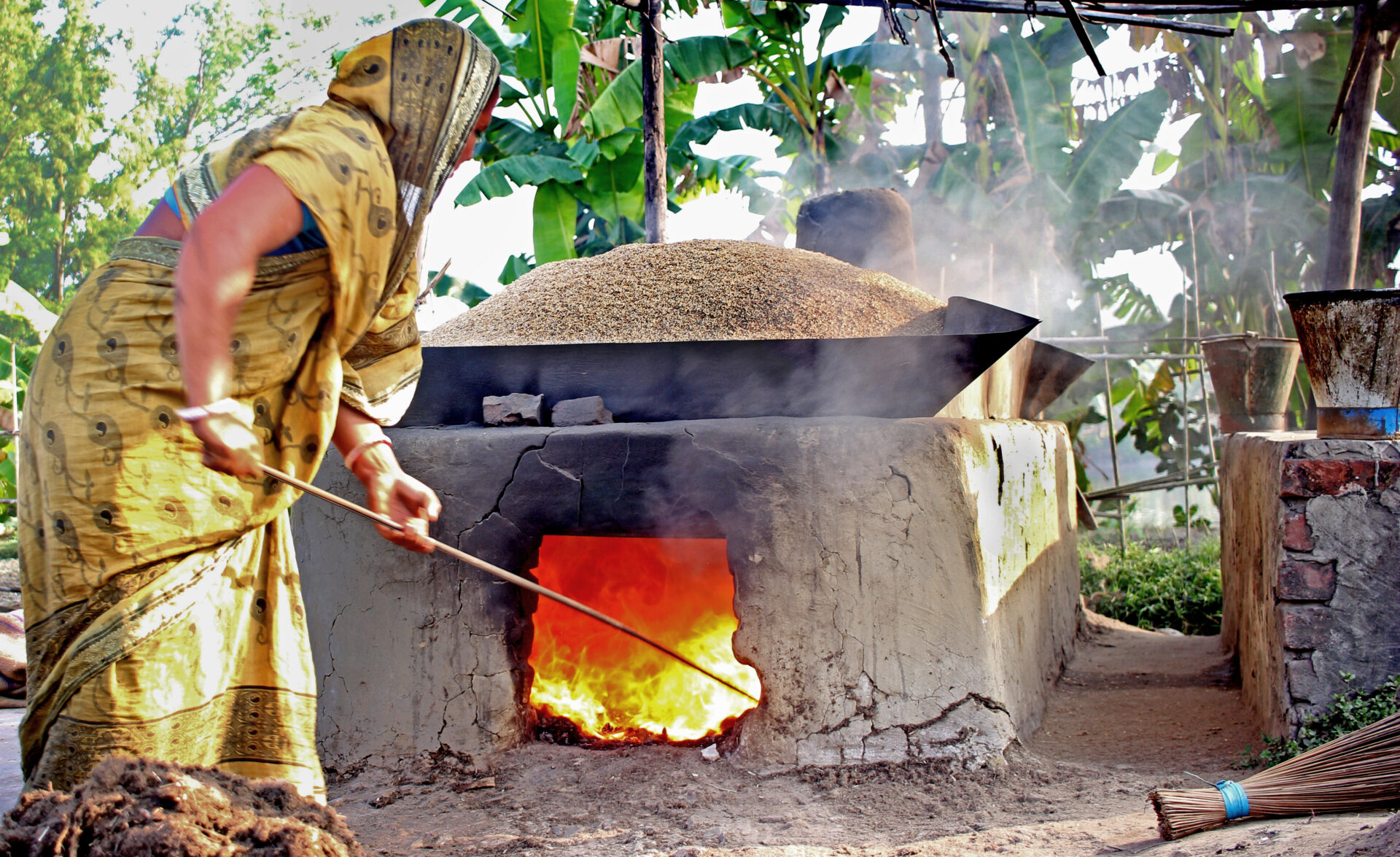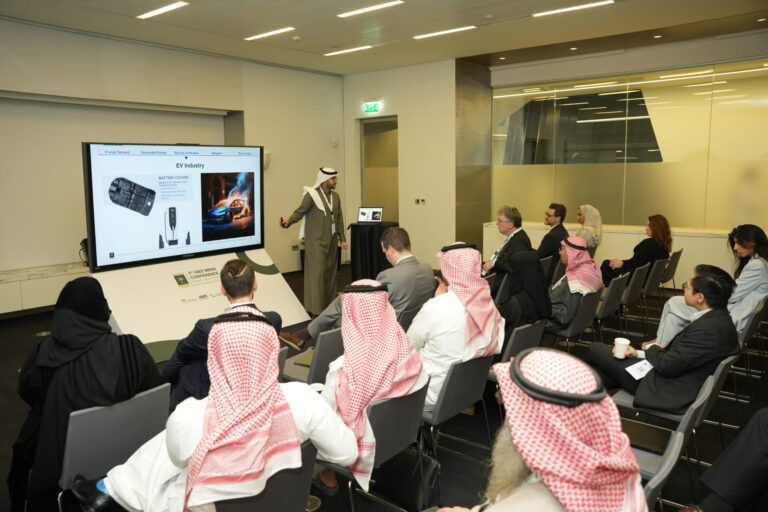Liquid petroleum gas (LPG) could help billions of people to transition from traditional fuels to sustainable solutions for cooking, a KAPSARC-led team suggests1.
As of 2021, 2.3 billion people worldwide cannot access clean fuels and technologies for cooking, according to a World Health Organisation report. Without a substantial increase in investment, by 2030 some 1.9 billion people will remain without access2. To reverse this trend and achieve universal clean cooking by 2030 requires at least $10 billion yearly investment—nearly a hundred times as much as the current funding shortfall—advises the UN-supported nonprofit organization Clean Cooking Alliance, which advocates for better practices.
Cheaper and more accessible than modern fuels, traditional cooking fuels such as charcoal, coal and wood are commonly used in low-income and rural communities. However, typically they derive from biomass, which contributes to deforestation and considerable amounts of greenhouse gas emissions annually. Their combustion in open fires and inefficient stoves also produces harmful particulates and gases that deplete indoor air quality, causing severe respiratory infections and heart disease, especially in women and children.
Fuels such as LPG and natural gas are more sustainable for cooking. Liquified under pressure for easy storage and transportation, LPG is a flammable hydrocarbon gas mixture that consists of propane, n-butane, and isobutane. Despite being derived from fossil fuels, it burns relatively cleanly without soot and emits lower levels of greenhouse gas than traditional cooking fuels. There are, however, many challenges preventing households from making the switch to this fuel.
Clean cooking
Fateh Belaid, Aayushi Awasthy, and Mohamad Hejazi, who manages KAPSARC’s Climate and Sustainability Department, have now identified various barriers to the adoption of clean fuels and technologies. Working with colleagues from the UN’s Economic and Social Commission for Western Asia, the researchers have focused on the least-developed countries in the Arab region, Comoros, Djibouti, Mauritania, Somalia, Sudan, and Yemen, and Madagascar in Africa. Looking at successful introduction of clean cooking in other regions, the researchers have suggested LPG solutions to help transition to clean cooking.
“High energy poverty, limited infrastructure, and financial resources make these countries vulnerable and in urgent need of intervention,” Belaid says, adding that they are key areas for international development efforts aimed at achieving affordable and clean energy by 2030.
About 80% of communities living in sub-Saharan Africa, the least-developed Arab countries, and Madagascar face considerable deficits in access to clean cooking technologies. The researchers found that, over the last two decades, there has been a decline in the adoption of clean cooking fuels in favor of biomass-based fuels, which will could heighten severe health risks and environmental issues. Households using clean fuels for cooking still rely on biomass to supplement their energy needs.
The main barrier to adoption in these countries is the high cost of clean cooking fuels and equipment. Financing gaps and insufficient financial resources also deter low-income households from purchasing fuel and equipment or businesses from creating large distribution networks.
Another barrier to adoption is geography. The lack of adequate supply chains for cylinder deliveries and refills restricts clean cooking access in remote and rural areas. Adoption is also impeded by limited awareness about the health and environmental benefits of clean cooking, Awasthy notes further hurdles in uptake such as a lack of strong policies, financial incentives, and subsidies for clean cooking initiatives.
Global efforts to adopt sustainable energy
The researchers suggest several targeted actions to improve clean cooking access. These actions, Hejazi says, include offering subsidies and financial incentives to increase affordability of clean cooking technologies, developing infrastructure to support supply chains and distribution networks, running public awareness campaigns on the benefits of clean cooking, and issuing supportive regulations and standards to promote market shifts.
Innovative business models can address the economic barrier of LPG. PAYG has emerged as a convenient way to provide access to LPG at lower cost. In this model, companies act as service providers that install the cylinder, remotely monitor fuel consumption, and provide refills when required. Customers pay for LPG as they use it instead of purchasing full cylinders. They can also top up their supply through small mobile payments.

Production of cheap cooking fuels like charcoal can contribute to deforestation and considerable amounts of gas emissions annually. image credit: DENIS-HUOT Michel / Hemis/ Alamy Stock Photo
The introduction of smart meters in informal settlements in Nairobi, Kenya is a successful example. Residents had relied on traditional cooking fuels until the implementation of smart meters in 2020. This was a game changer that enabled LPG access by eliminating the upfront expense of a cylinder and allowing incremental fuel payments via mobile banking. Residents are also now enjoying safer kitchens and improved indoor air quality. Despite a decline in income during COVID-19 lockdowns, 95% of households enrolled in the program maintained their subscription.
Access to financial services can be improved by offering low-interest loans through microfinance and government-backed programs. India initiated the Pradhan Mantri Ujjwala Yojana program, which provides clean cooking access by installing natural gas pipelines in urban areas and LPG connections for rural households. Despite mixed results, the program resulted in 71% clean fuel adoption in 2021 and established 80 million LPG connections for low-income households.
Algeria, whose clean cooking access reached almost 100% in 2021, has developed LPG infrastructure for domestic and vehicle use. With support from a private–public partnership, the country has constructed a pipeline to improve LPG distribution and has promoted LPG as a cheaper and cleaner alternative to gasoline. “The program, complemented by energy subsidies and incentives, showcases how substantial investment and strategic planning with a people-centric approach can bring about tangible benefits in energy diversification,” Belaid says.
“Collaboration across sectors is essential for achieving universal clean cooking goals by 2030,” Awasthy says. One successful example is India’s program, which rests on a partnership between the government, oil companies, financial institutions, and non-governmental organizations to provide subsidized LPG connections to rural households. Similarly, Keny’s PAYG model involves public–private partnerships and community organizations to offer affordable plams via mobile payment platforms.
Reference
1. Belaid, F., Awasthy, A., Hejazi, M., Sedaoui, R., Ansari, M. & Ratka, S. Role of LPG in enabling a just and inclusive energy transition in Africa and the Arab region. KAPSARC/UNESCWA Report 14 December 2023. | Article
2. https://www.who.int/news/item/20-01-2022-who-publishes-new-global-data-on-the-use-of-clean-and-polluting-fuels-for-cooking-by-fuel-type




